Table of Contents
Overview – Cervical & Brachial Plexuses
The cervical & brachial plexuses are key components of the peripheral nervous system in the neck and upper limb. The cervical plexus innervates the diaphragm, skin of the neck, and deep cervical muscles, while the brachial plexus provides motor and sensory supply to the upper limb. This guide breaks down their anatomy and clinical relevance, focusing on terminal branches of the brachial plexus essential for clinical practice.
Cervical Plexus
- Roots: Ventral rami of C1–C4
- Location: Deep to the sternocleidomastoid
- Motor Branches:
- Ansa cervicalis – innervates infrahyoid muscles
- Phrenic nerve (C3–C5) – innervates the diaphragm
- Sensory Branches (cutaneous nerves):
- Lesser occipital – skin of scalp posterior to the ear
- Great auricular – skin over parotid gland and mastoid process
- Transverse cervical – anterior neck skin
- Supraclavicular – skin over clavicle and shoulder
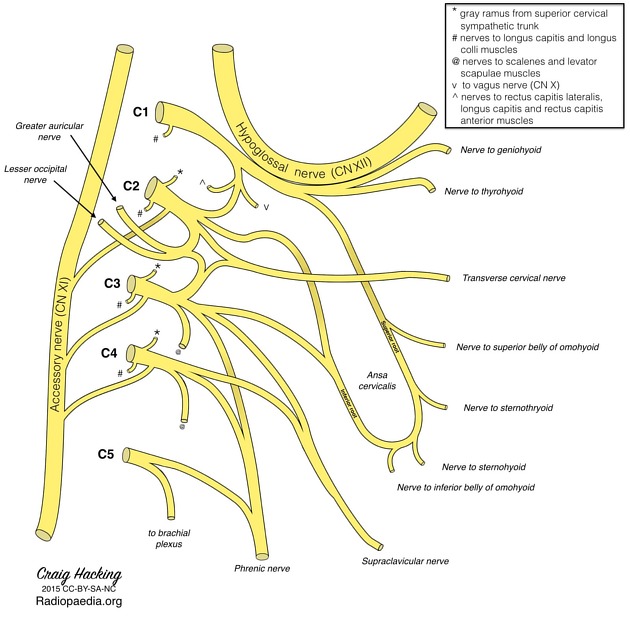
Brachial Plexus
- Roots: Ventral rami of C5–T1
- Mnemonic: “Risk Takers Don’t Cautiously Behave”
- Roots → Trunks → Divisions → Cords → Branches
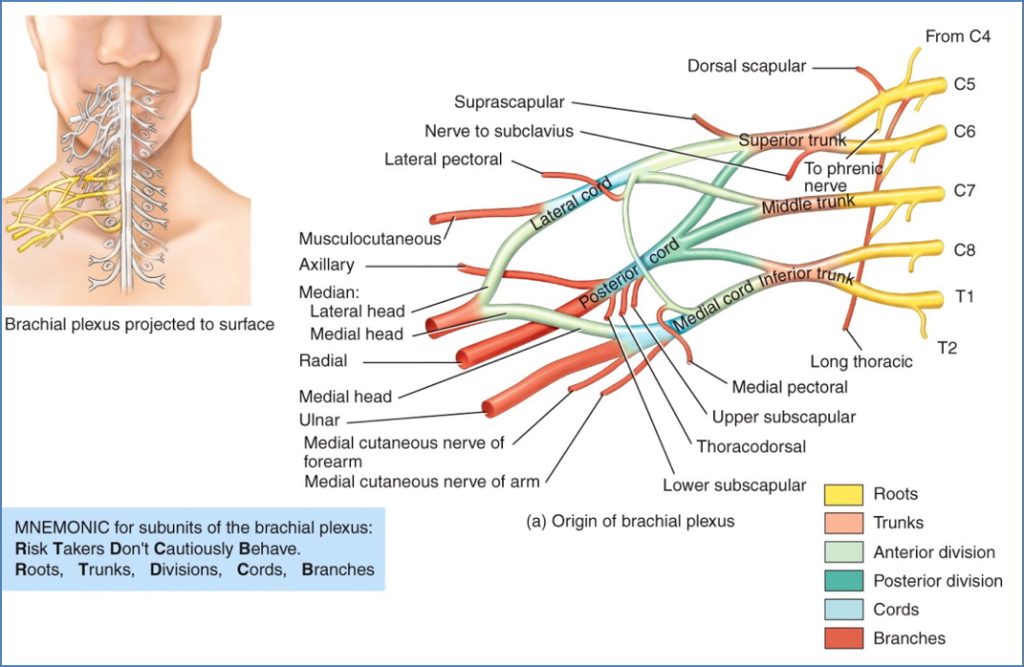
Key Terminal Branches
Musculocutaneous Nerve
- Spinal Roots: C5–C7
- Motor:
- Biceps brachii
- Brachialis
- Coracobrachialis
- Sensory:
- Skin of anterolateral forearm

Median Nerve
- Spinal Roots: C5–T1
- Motor:
- Anterior forearm (except FCU & medial FDP):
- Palmaris longus
- Flexor carpi radialis
- Flexor digitorum superficialis
- Lateral ½ of flexor digitorum profundus
- Flexor pollicis longus
- Pronator teres & pronator quadratus
- Thenar muscles (thumb):
- Abductor pollicis brevis
- Flexor pollicis brevis
- Opponens pollicis
- Lumbricals 1 & 2
- Anterior forearm (except FCU & medial FDP):
- Sensory:
- Palmar side of lateral ⅔ of hand (fingers 1–3 and half of 4th)
- Dorsum of distal phalanges of fingers 2 & 3
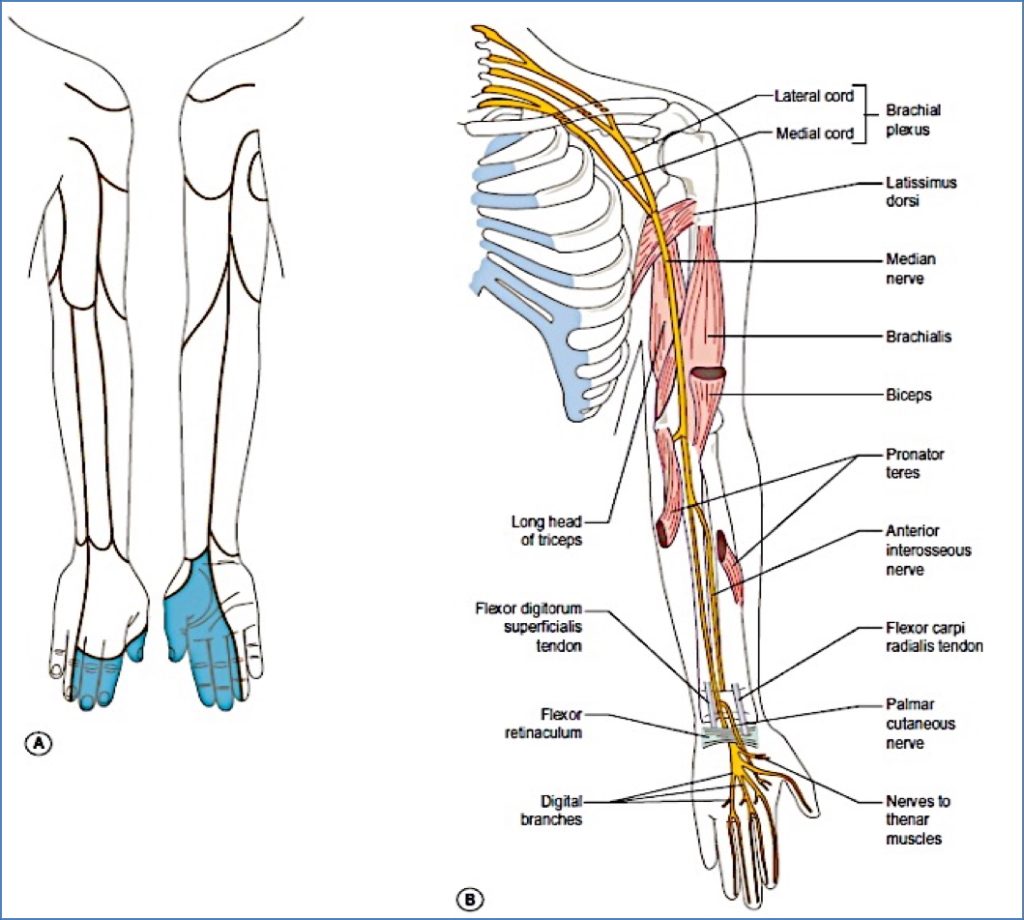
Ulnar Nerve
- Spinal Roots: C8–T1
- Motor:
- Forearm:
- Flexor carpi ulnaris
- Medial part of flexor digitorum profundus
- Hand:
- Adductor pollicis
- Hypothenar muscles (FDMB, ADM, ODM)
- Lumbricals 3 & 4
- Interossei (palmar & dorsal)
- Forearm:
- Sensory:
- Medial ⅓ of hand (both anterior and posterior)
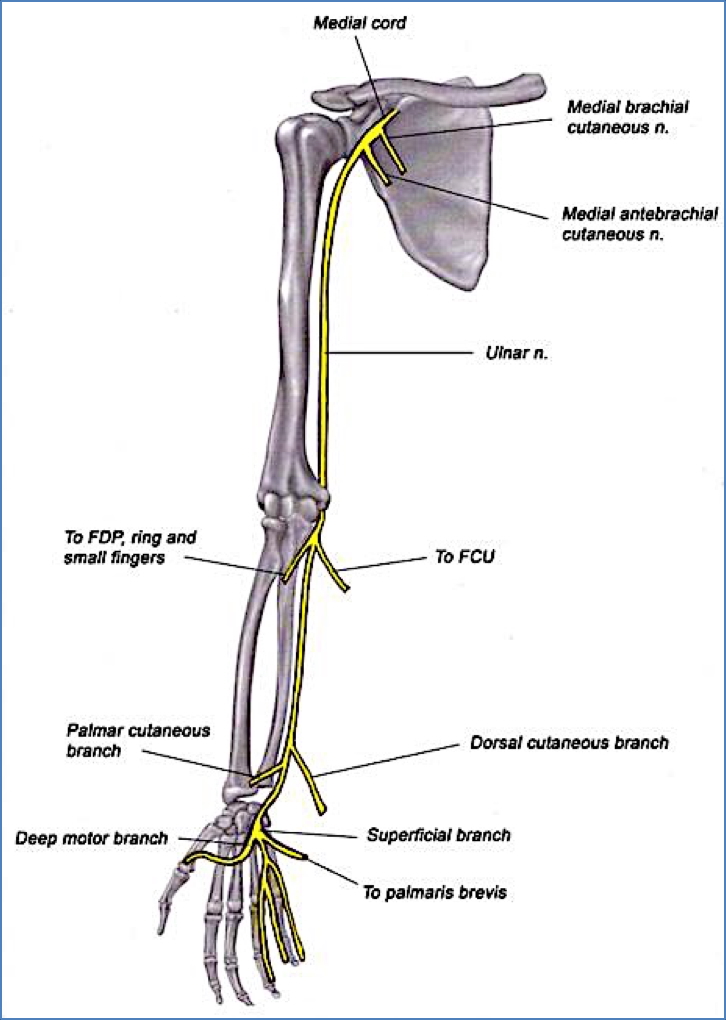
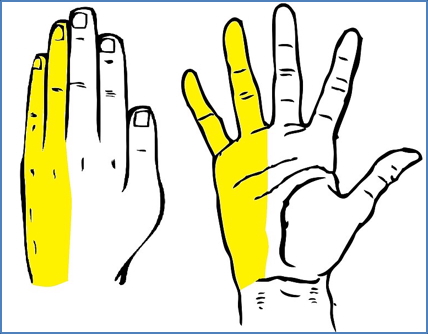
Axillary Nerve
- Spinal Roots: C5–C6
- Motor:
- Deltoid
- Teres minor
- Sensory:
- Skin over shoulder
- Glenohumeral joint capsule
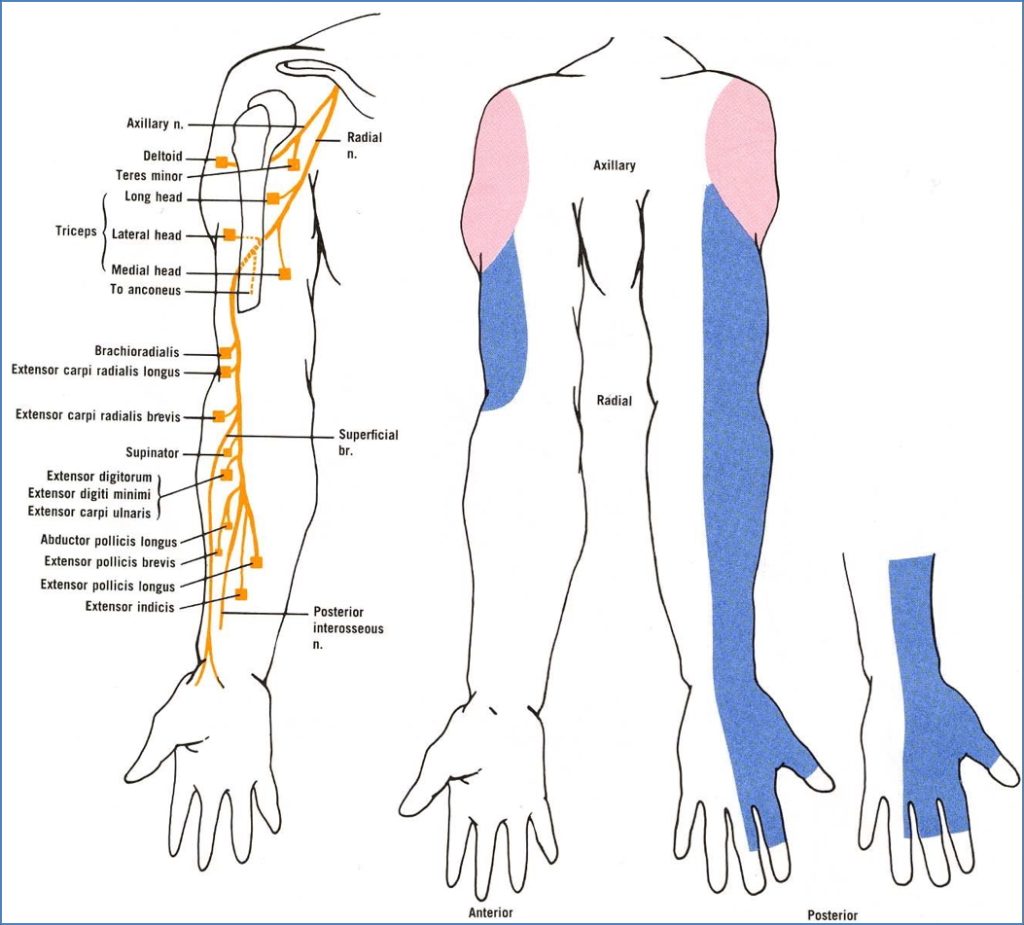
Radial Nerve
- Spinal Roots: C5–T1
- Motor:
- Posterior arm and forearm extensors:
- Triceps brachii
- Anconeus
- Supinator
- Brachioradialis
- Extensor carpi radialis longus & brevis
- Extensor carpi ulnaris
- Extensor digitorum
- Extensor digiti minimi
- Extensor indicis
- Abductor pollicis longus
- Extensor pollicis longus & brevis
- Posterior arm and forearm extensors:
- Sensory:
- Posterior arm
- Posterior forearm
- Posterior hand (except fingertips of digits 2 & 3)

Summary – Cervical & Brachial Plexuses
The cervical plexus provides vital innervation to the neck and diaphragm, while the brachial plexus supplies motor and sensory innervation to the entire upper limb. Understanding the terminal branches and their muscular and cutaneous distributions is critical for localising nerve lesions and performing nerve blocks.
For broader neuroanatomy, visit our Nervous System Overview page.